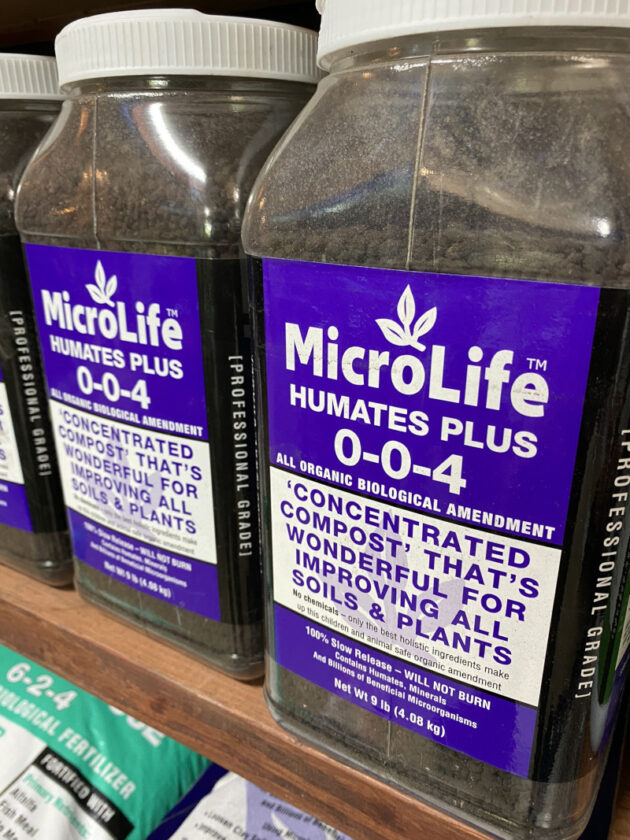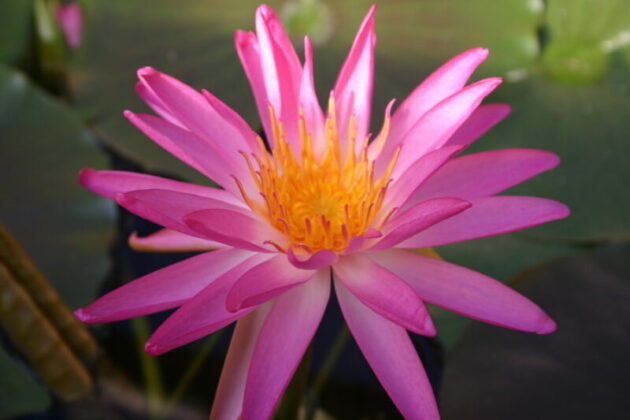Category Gardening, Koi, Landscape, Organic Pest Control, Ornamental Fish, Planting, To Do, Water Gardens
May 29, 2025

Updated 5/29/25
Summer Solstice: June 20th, 2025.
Happening this June:
Austin Pond Society's 30th Annual Pond Tour! June 7th&8th
Pollinator Week! June 16th-22nd
Garden & Landscapes
When the temperatures begin to soar and the idea of working outside can be unbearable at times, we can not forget about our beautiful landscapes and the investments we’ve made. Work smart and work safely in the heat. Mornings and evenings can be downright beautiful weather to work in! And for the hardcore gardeners, headlamps were invented for us!!!
Planting:
Planting in the summer has its challenges in Central Texas, but it’s 100% doable if you have the time to keep an eye on new plantings! If you're planning a vacation or an extended stay up north, we’d recommend planting when you return.
#1 Tip: Plants that are wilted in the morning NEED water immediately. Plants wilting in the afternoon means it’s hot. If you are worried, check the soil moisture levels at 4-6 inches depth. If the solid is bone dry, dust, at this depth, a slow, deep soaking is needed.
Often, if it's hot, some of our plants will wilt to conserve water! You’ll see them perk up after the sun begins to set and the temperature falls! This one tip can keep your new plants happy all summer long.

Fertilizing:
Continue fertilizing with a slow-release, organic fertilizer like Microlife 6-2-4 while doing foliar sprays of Ocean Harvest or Super Seaweed to help get everyone ready for the extreme temperatures of summer. Some flowering plants will benefit more from using granular and Microlife Maximum Blooms as a foliar spray to help keep up with the high amounts of phosphorus they are taking up. Giving your plants, and soil, Microlife Humates is a great way to deliver concentrated compost full of humic acid into your soil while also helping with water retention and water penetration for these triple digits in our future!
Watering:
2025- We’ve been blessed thus far into the growing season with semi-regular rains, and some of us haven’t fired up the irrigation system yet! (We haven’t had to!) However, the Texas drought maps continue to grow.
Potted plants should be getting water daily, depending on their gallon size, while plants in the landscape should be receiving deep but infrequent watering when we have not been getting rain. Follow this link for a quick watering guide. Here is a link to the presentation we had for watering wisely in Central Texas. The first pages go over when to mow your lawn and the differences between our most common grasses.
Again! It is best to water your landscape infrequently but deeply! Ideally, you should be able to push a screwdriver down 6 inches into the soil after a slow, deep soaking. If you can only, easily, press the tool 2-3 inches down, the irrigation did not run long enough (or you have shallow soil and should consider adding additional soil)!
Do your best to water in the morning hours and not in the evening to prevent fungal diseases! Watering or splashing water on the plant's leaves can promote further growth and transmission of fungal infections! Do your best to keep irrigation water away from the foliage! This isn't always possible.

This bloom is "spent". Removing old blooms will cause this Salvia to produce two more flower spikes in its place!
Pruning:
You can deadhead (remove old/spent flowers) flowers or prune back some branches of woodier plants at this time. Perennials will respond well to light shearing and Canna Lilies can be cut to the ground to reinvigorate the plant. Salvia ‘Indigo Spires’ specifically should be pruned by 50% to help prevent late-season cracking.
Deadheading will encourage plants like roses and perennial flowers to rebloom!
Pruning can reduce water demand and encourage fresh, nice-looking growth. Do not prune more than 25% of the plant as a general rule of thumb!
Do not prune oak trees at this time as the beetle that carries oak wilt is active and could be attracted to the cuts we make. If you must prune your oak tree at this time be sure to clean your saw with a 1 part bleach: 10 parts water solution before and after working on each tree! Immediately after cutting a branch, paint the wound with wound sealer, spray paint, or a varnish.

In the water Garden/Pond:
Warning!!!
At this time, we highly recommend double dosing dechlorinators like our Pond Prime when changing water or adding water. Municipal water sources may be adding additional treatments to the public water, making it safe for humans, BUT NOT SAFE for our ornamental fish!
See more Summertime Fish Safety Tips here.
Keep a close eye on water temperatures if you keep fish! Ideally, your water should not exceed 85 degrees Fahrenheit if you have Koi or Goldfish. At 85 degrees, the oxygen levels in the water can become dangerously low! Ice, ice blocks, and frozen water bottles can be used to bring down temps in an emergency, but ultimately, shading the water is the best solution, with Water Lilies or structures.
Trim water lily pads and old flowers weekly or bi-weekly and add fertilizer tabs once a month for phenomenal-looking plants! Bog or Marginal plants will respond to pond tabs but often additional fertilizer isn't needed in a balanced pond.
Feed fish ONLY what they can eat in five minutes and remove all uneaten food after the time is up! This habit helps reduce/prevent pollution.
Add Bacteria as directed by the manufacturer. Most are once a month. This will help reduce dangerous toxins like ammonia and nitrites in the water.
Use extreme caution if using Algicides in warmer water. Follow the directions! Overdosing on algicides will tie up oxygen. Consider adding a UV Clarifier/Sterilizer (in stock now) to kill green, "pea soup" algae blooms. Using UV systems is much safer for your fish than chemical treatments.
For Green Rocks in the pond or on the waterfall, we recommend Green Clean granular algicide or Pond Clay. Pond clay covers the algae, depriving it of the sunlight it must have to grow. Generally, higher doses of clay are needed to achieve the desired outcome than what the package recommends. And Koi will enjoy the natural clay as a source of minerals.
Summer Lawn Care
As always, we don’t recommend the use of chemical fertilizers and “Weed-n-Feed”, especially in the summer! You want a burnt lawn? This is how we get a burnt lawn!
Light applications of MicroLife granular food may be needed in some situations, but for the most part, we try to ONLY recommend MicroLife’s Humates Plus this time of year! Humates Plus is designed to open the soil structure to allow air and water penetration when our soils tend to be more brick-like than soil. It also has the added benefit of greening up the lawn without the use of growth-promoting nitrogen!
Be sure to set your mower to the highest or second-highest setting! Longer shoots = deeper roots! Deeper roots = less demand for water. Mow and mow often! Always try to NEVER take more than ¼ of the grass blade! When we take more than ¼, the plant has to readjust its priority to regrowing the blade instead of the roots! We strive for a balanced root-to-shoot growth rate!
If you have a service to take care of your lawn, make sure they are onboard with these simple rules. We see too many services scalping lawns in the summer!!! And ask them if they disinfect their equipment between properties. So many lawn diseases could be prevented by good contractor equipment hygiene!
Keep an eye out for pests and diseases like Chinch Bugs (soon to arrive) and Take-All-Root-Rot (TARR). Catching these issues early can save hundreds, if not thousands, in lawn replacement expenses!
We integrate our Pest Management, and you can too!
Recommendations by a friend of HCWG, Horticulturist Calvin King
Customers often ask about the best way to get rid of pests. My answer isn't a quick-fix product or chemical spray, but rather an Integrated Pest Management (IPM) strategy. By knowing and applying IPM strategies one has the best defense against any pest which also keeps diseases away. IPM can be broken up into five different areas:
-
Cultural - plant native and well-adapted, pest-resistant plant varieties, and keep them healthy
-
Diagnostic - properly identify the problem
-
Mechanical – hand remove insects, use water blasts, traps, and/or barriers
-
Biological - recognize, encourage, and/or introduce beneficial predators in your landscape
-
Chemical – if you must use a pesticide use the least toxic product first; always read and follow label directions
Cultural methods can include using varieties or cultivars that are known to resist or deter pests, applying crop rotation, using polycultures, proper weed management, water effectively, and proper fertilization will help give any plant the proper growth it needs to build up the physical and physiological defenses against pests.
Diagnostic techniques include proper identification and knowing what pest you are working with. By monitoring and tracking populations of insects, we can better understand a threshold for when we should be concerned and start a treatment plan.
Mechanical steps are using things like physical barriers, placing traps, using water to spray off pests, or even removing them by hand. Any action that helps reduce the overall amount of insects or the damage they do.
Biological methods involve using organisms to control another like beneficial insects that parasitize caterpillars, encouraging birds to your property to take care of grasshoppers, or using Bt to control caterpillars or mosquito larvae.
Chemicals (toxins/poisons) are and should always be a last step, only used when all other methods have failed. When we jump to a chemical solution every time we are not getting to the root of the problem and only applying a band-aid. Using chemicals could also disrupt the ecosystem of your garden, killing or harming our beneficial heroes, who would normally take care of bad pests.
By using our knowledge of nature and playing into her natural cycles we can have a thriving garden with lower maintenance requirements that a monoculture, chemical-happy landscape would not be able to keep up with. The idea of using a one-and-done application of chemicals can sound tempting but in reality, they usually do not work the way they claim and the damage is more on other insects and life than the pest we are worried about.
Tags Aquatic Plants, edible garden, goldfish, koi ponds, Landscaping, lawn care, Organic, Pond Care, Water Lilies

You must be logged in to post a comment.